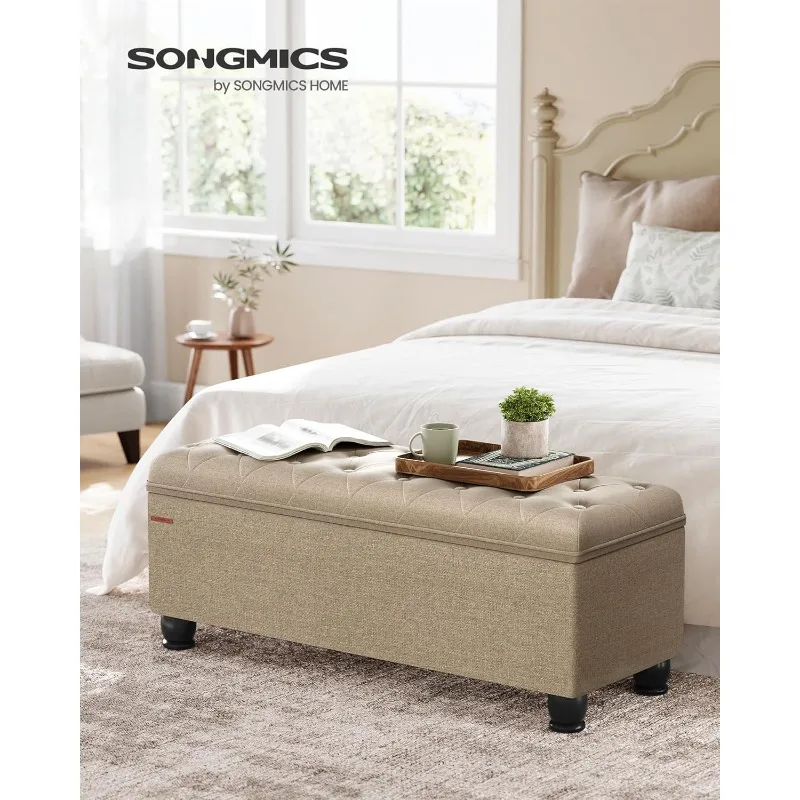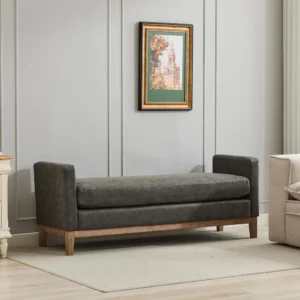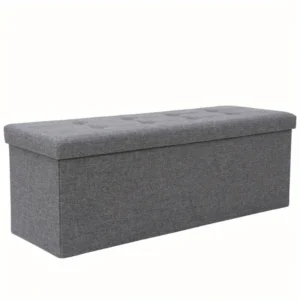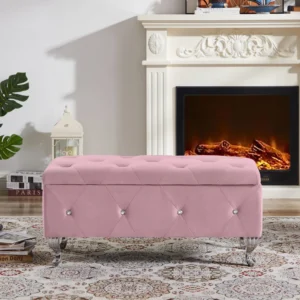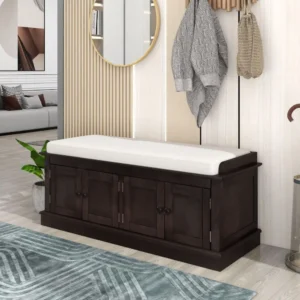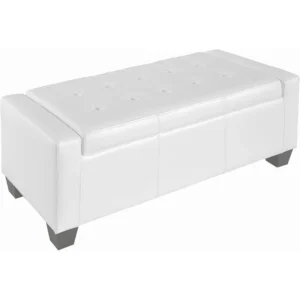Understanding the Value and Composition of Your Upholstered Bench
Upholstered benches are more than just pieces of furniture—they’re investments in your home’s comfort, style, and functionality. A well-maintained bench serves multiple purposes: it provides extra seating, creates an inviting atmosphere, and enhances your home’s aesthetic appeal.
The true value of quality upholstered benches becomes apparent when you consider their versatility:
- They create welcoming entryway seating while providing storage
- They add style and character to living spaces
- They provide comfortable seating that complements harder furniture pieces
- They can serve as focal points that tie room designs together
Studies show that well-maintained furniture can last 7-10 years longer than neglected pieces, making proper care essential for protecting your investment. Many homeowners find that transforming entryway spaces with saving benches dramatically improves both functionality and first impressions of their homes.
Understanding your bench’s construction is the first step to proper maintenance. Most upholstered benches consist of three primary components: the frame (usually wood or metal), padding (foam, batting, or springs), and the fabric covering. Each component requires specific care, but the upholstery typically demands the most attention since it’s directly exposed to daily wear, spills, and environmental factors.
The variety of entryway bench cushion styles and materials means that maintenance approaches must be customized. Unlike hard furniture that can simply be wiped clean, upholstered pieces absorb spills, trap odors, and show wear patterns that require specialized care techniques.
Identifying Your Bench’s Upholstery Type for Proper Care
Before attempting any cleaning or maintenance, you need to identify exactly what type of fabric covers your bench. This knowledge is crucial because using the wrong cleaning method can permanently damage your upholstery.
Understanding Cleaning Codes
Most upholstered furniture includes a manufacturer’s tag (usually attached underneath the bench or cushion) with cleaning codes that provide essential guidance:
- W: Water-based cleaning agents are safe
- S: Solvent-based cleaners only (no water)
- WS: Either water-based or solvent cleaners are acceptable
- X: Vacuum only—no liquid cleaners of any kind
If you can’t find a tag on your perfect upholstered entry bench, you’ll need to identify the fabric type by its appearance and texture.
Common Upholstery Fabrics and Their Characteristics
| Fabric Type | Durability | Cleaning Difficulty | Best Cleaning Method |
|---|---|---|---|
| Cotton | Moderate | Medium | Water-based cleaners |
| Linen | Moderate | High | Dry cleaning solvents |
| Wool | High | Medium | Gentle water-based methods |
| Microfiber | Very High | Low | Water or alcohol-based cleaners |
| Velvet | Moderate | High | Professional cleaning recommended |
| Performance Fabric | Extremely High | Very Low | Usually water-based cleaners |
| Leather/Faux Leather | High | Low | Specific leather products |
When selecting a shoe bench cushion, many homeowners prioritize easy-to-maintain fabrics, especially for high-traffic areas. Microfiber and performance fabrics have become increasingly popular for their stain resistance and simple cleaning requirements.
If you still can’t determine your fabric type, try this simple test: in an inconspicuous area, lightly dampen a white cloth with water and gently blot the fabric. If color transfers to the cloth or the fabric texture changes, your bench likely requires solvent-based cleaning methods.
Essential Tools and Products for Upholstered Bench Maintenance
Creating a dedicated maintenance kit ensures you’ll have the right tools available when spills or stains occur. These essentials will prepare you for both routine maintenance and emergency cleanups.
Must-Have Tools:
- Vacuum with upholstery attachment: Choose one with adjustable suction for delicate fabrics
- Soft bristle brush: For gentle agitation of stains and routine cleaning
- Microfiber cloths: These trap dust and absorb liquids without leaving lint behind
- Spray bottles: For applying cleaning solutions evenly
- White cloths or paper towels: For blotting stains (white prevents color transfer)
- Soft sponges: For gentle application of cleaning solutions
Cleaning Products by Fabric Type:
- Water-safe fabrics: Mild dish soap diluted in water, commercial upholstery cleaners
- Solvent-only fabrics: Dry cleaning solvents, alcohol-based cleaners
- All fabrics: Fabric protector spray (apply after cleaning)
DIY Cleaning Solution Recipe:
For water-safe fabrics, mix:
– 1 cup warm water
– 1/4 cup white vinegar
– 1 tablespoon dish soap
Store your maintenance supplies in a caddy or container that’s easily accessible. When spills happen, quick action makes a significant difference in preventing permanent stains.
Avoid tools with stiff bristles, harsh chemicals like bleach, and steam cleaners (unless specifically recommended for your fabric type) as these can damage upholstery fibers and padding.
Preventative Care: Daily and Weekly Practices
The secret to long-lasting upholstered benches isn’t complicated—it’s consistency. Implementing simple preventative practices can dramatically extend your bench’s lifespan and keep it looking fresh.
Strategic Placement
Where you position your upholstered bench significantly impacts its longevity:
- Avoid direct sunlight: UV rays fade fabrics over time—position benches away from windows or use window treatments to filter sunlight
- Maintain distance from heat sources: Keep benches at least 2-3 feet from radiators, fireplaces, and heating vents to prevent fabric deterioration
- Consider traffic patterns: In busy homes, maximizing small spaces with smart entryway benches means placing them where they won’t become impromptu stepping stools or play structures
Weekly Maintenance Schedule
- Vacuum thoroughly: Once weekly, use upholstery attachments to remove dust and debris, vacuuming in two directions for thorough cleaning
- Rotate cushions: If removable, flip and rotate cushions weekly to distribute wear evenly
- Spot check: Examine for new stains or spills that need immediate attention
- Fluff and reshape: Hand-fluff cushions to maintain their shape and comfort
Pet Owner Tips
For homes with pets, additional steps help manage fur and dander:
– Use rubber gloves to gather pet hair (slightly dampened hands create static that attracts fur)
– Keep a dedicated lint roller near your bench for quick touch-ups
– Consider a washable throw to protect the bench in your pet’s favorite lounging area
Studies show that benches in homes with regular vacuuming and cushion rotation last up to 30% longer than those without these simple maintenance habits. For high-use areas, consider mudroom bench cushions designed for enhanced durability and stain resistance.
Monthly Maintenance Routine
While daily and weekly care forms the foundation of upholstery maintenance, monthly deep attention ensures your bench remains in top condition. Set aside about 30 minutes each month for these more thorough procedures.
Monthly Maintenance Checklist:
- Deep crevice cleaning: Remove cushions (if possible) and vacuum along seams, corners, and under cushions where crumbs and debris collect
- Inspect seams and buttons: Look for loose threads or buttons that need attention
- Check underneath: Vacuum and inspect the underside of your bench for dust and pests
- Examine legs and hardware: Tighten any loose screws or fittings
- Assess overall condition: Identify developing wear patterns or areas needing special attention
- Treat leather/faux leather components: Apply appropriate conditioner to prevent cracking
- Deodorize: Sprinkle baking soda on fabric surfaces, let sit for 15-20 minutes, then vacuum thoroughly
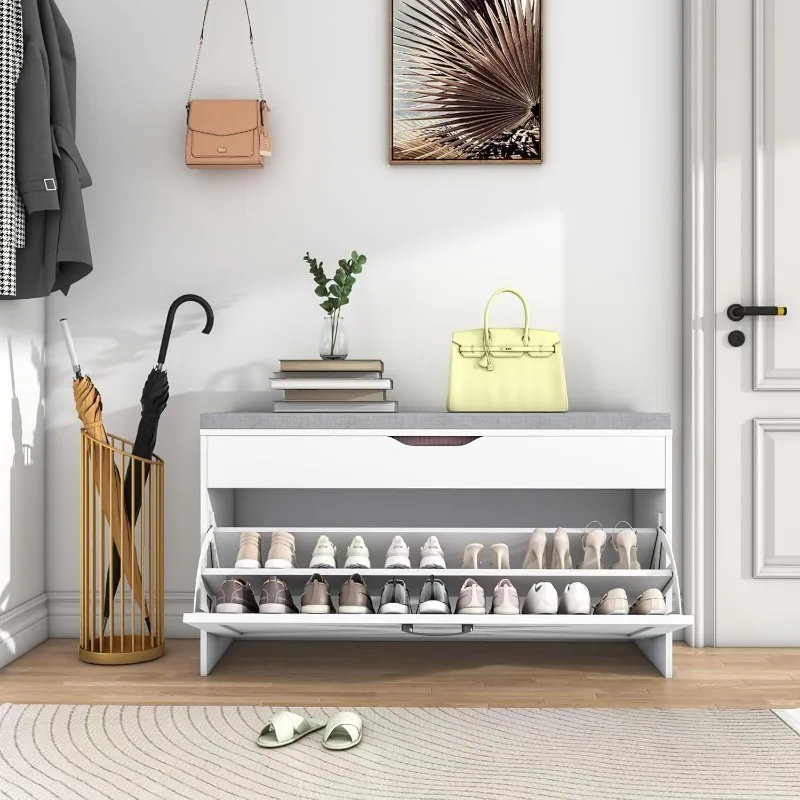
Many bench owners create a simple maintenance calendar with monthly reminders. This systematic approach prevents small issues from becoming major problems and helps distribute wear more evenly across your furniture.
Pay special attention to areas showing early signs of wear. Rotating how people sit or placing decorative pillows strategically can redirect pressure from these vulnerable spots before damage becomes noticeable.
Seasonal Deep Cleaning for Different Upholstery Types
Seasonal transitions provide perfect opportunities for deeper cleaning that revitalizes your upholstered bench. Aim to perform a thorough cleaning 2-4 times yearly, depending on usage and household conditions.
Preparation for Any Deep Clean:
- Vacuum thoroughly to remove surface dust and debris
- Test any cleaning solution on an inconspicuous area first
- Work in a well-ventilated space
- Have clean towels ready for blotting and drying
Cleaning Methods by Upholstery Code:
For W-Code Fabrics (Water-Safe):
1. Mix a gentle cleaning solution (1 tablespoon mild dish soap in 2 cups warm water)
2. Dampen a clean cloth with the solution—never soak the fabric
3. Work in small sections, using gentle circular motions
4. Follow with a clean, damp cloth to remove soap residue
5. Allow to air dry completely
For S-Code Fabrics (Solvent-Only):
1. Purchase appropriate dry-cleaning solvent
2. Apply according to product instructions using a clean white cloth
3. Avoid over-wetting the fabric
4. Allow proper ventilation during and after cleaning
For WS-Code Fabrics (Water or Solvent):
1. Start with the gentler water-based method
2. For stubborn stains, follow with solvent if needed
For X-Code Fabrics (Vacuum Only):
1. Use only dry brushing and vacuuming
2. Consider professional cleaning for significant soiling
After Any Deep Cleaning:
- Ensure complete drying before regular use (typically 4-6 hours minimum)
- Increase air circulation with fans if needed
- Apply fabric protector once completely dry
- Avoid sitting on damp upholstery to prevent stretching and damage
For benches with significant soiling or those approaching the 2-year mark since their last professional cleaning, consider hiring specialists who can safely deep clean without damaging delicate fabrics.
Stain Removal Masterclass: Tackling Common Problems
Stains are inevitable with upholstered furniture, but quick and appropriate action can prevent permanent damage. The golden rules of stain removal apply to all upholstered benches:
- Act immediately—fresh stains are easier to remove
- Blot, never rub (rubbing pushes stains deeper into fibers)
- Work from the outside toward the center to prevent spreading
- Always test cleaning solutions on a hidden area first
Water-Based Stain Solutions:
For coffee, tea, wine, and juice stains:
1. Blot up as much liquid as possible with clean, dry cloths
2. Mix 1 tablespoon dish soap with 2 cups cool water
3. Dampen a clean cloth and blot gently
4. Follow with a cloth dampened with clean water
5. Blot dry with towels, then allow to air dry
For blood or protein-based stains:
1. Use only COLD water (hot water sets protein stains)
2. Create a mixture of 1 tablespoon enzyme laundry detergent in 2 cups cold water
3. Apply gently, working from outside in
4. Rinse with clean, cold water on a cloth
5. Blot thoroughly to dry
Oil-Based Stain Solutions:
For grease, makeup, and body oils:
1. Sprinkle baking soda or cornstarch on the stain to absorb excess oil
2. Let sit for 15-20 minutes, then vacuum
3. For remaining stain, use a dry cleaning solvent on a clean cloth
4. Blot gently until the stain lifts
5. Allow to dry completely
Owners of best upholstered storage benches often keep a stain removal chart in their cleaning kit for quick reference during emergencies. For mixed stains like mud or unknown substances, start with dry methods (vacuuming, brushing) before attempting any liquid cleaners.
Eliminating and Preventing Odors in Upholstered Benches
Odors can develop in upholstered furniture even with regular cleaning, especially in homes with children, pets, or high humidity. Addressing smells quickly prevents them from becoming permanently embedded in the padding.
Natural Deodorizing Methods:
- Baking soda treatment: Sprinkle liberally over the entire surface, let sit for several hours or overnight, then vacuum thoroughly
- Sunlight and fresh air: When weather permits, place the bench in indirect sunlight with good airflow for 2-3 hours (avoid direct sun which can fade fabrics)
- White vinegar spray: Mix equal parts water and white vinegar in a spray bottle, mist lightly around (not on) the bench to neutralize airborne odors
For Stubborn Odors:
- Enzymatic cleaners: These break down proteins in biological odors (pet accidents, body odors)
- Activated charcoal or silica: Place containers near (not on) the bench to absorb environmental odors
- Fabric refresher sprays: Choose products formulated for your specific upholstery type
Prevention Strategies:
- Treat spills immediately to prevent bacterial growth
- Use washable throws in high-use areas
- Place a small dehumidifier nearby in humid environments
- Vacuum weekly to remove odor-causing particles
- Consider seasonal professional cleaning for deep deodorization
Remember that persistent odors sometimes indicate deeper issues like mold or mildew, especially if accompanied by musty smells. In these cases, inspect the bench thoroughly for signs of moisture damage.
Special Considerations for Different Fabric Types
Different upholstery materials require specialized care approaches to maintain their unique characteristics and appearance. Understanding your specific fabric type allows you to provide the most effective maintenance.
Velvet and Pile Fabrics:
- Clean with the nap (the direction the fibers lay when you run your hand over them)
- Use a soft brush rather than stiff vacuuming attachments
- Address crushing by steaming (hold steamer 6 inches away) and gently brushing
- Never use stiff bristles which can damage the pile
- Rotate use to prevent wear patterns
Linen and Cotton:
- Vacuum frequently to prevent dust from settling into fibers
- Clean spills immediately—these natural fibers absorb liquids quickly
- Use distilled water for cleaning to avoid mineral deposits
- Consider professional cleaning for significant soiling
- Expect some natural wrinkling as part of the fabric’s character
Performance Fabrics:
- Maintain stain resistance by avoiding oil-based cleaners
- Clean with mild soap and water according to manufacturer recommendations
- Reapply fabric protector annually to maintain performance
- Avoid abrasive cleaning tools that might damage protective coatings
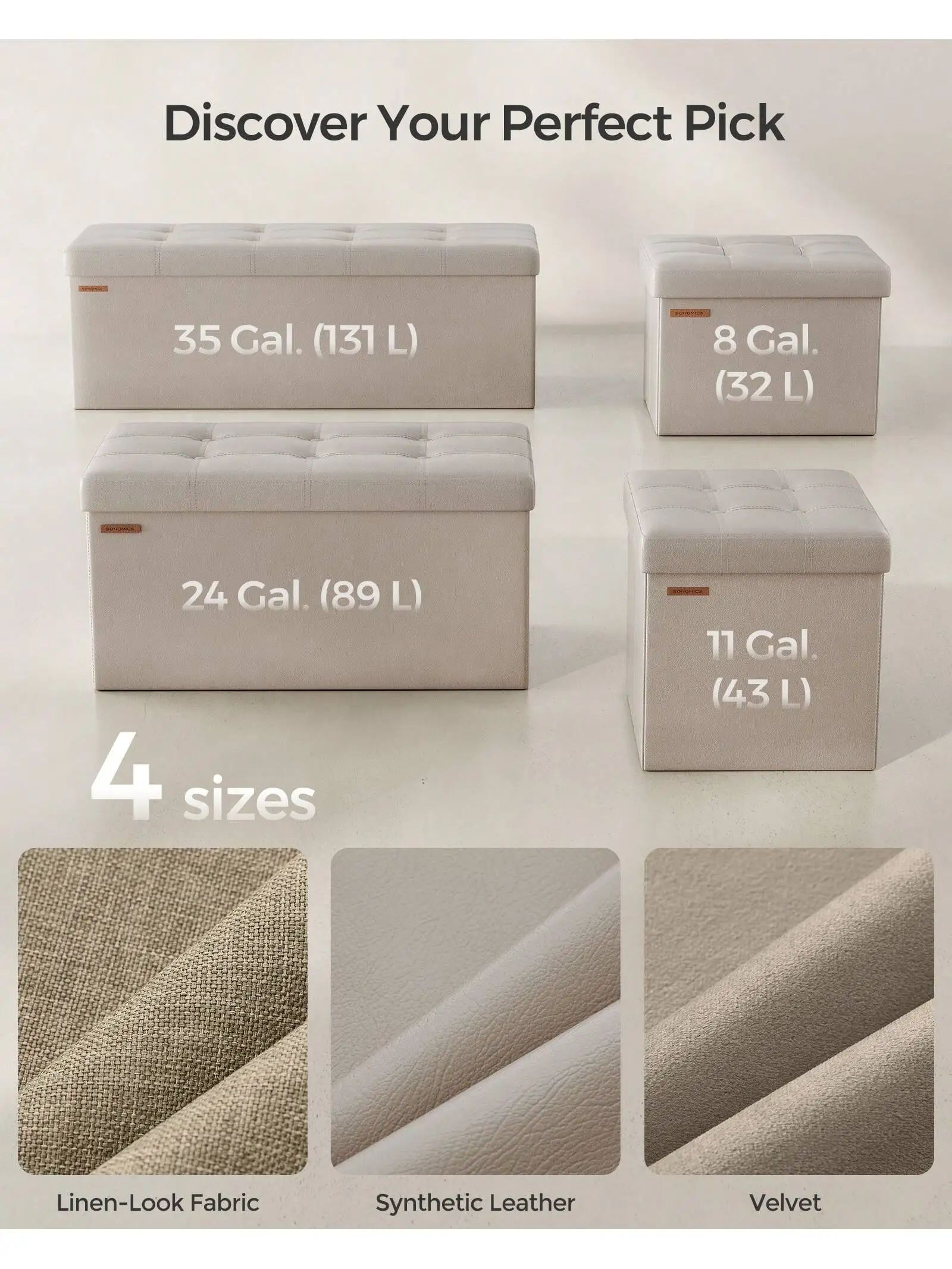
For homes with limited space, space-saving entry benches for small homes often feature specially treated fabrics that resist stains while maintaining a compact profile. These specialized upholstery types typically come with specific care instructions that should be followed precisely.
The shoe storage bench designs available today often incorporate moisture-resistant fabric treatments to handle the challenges of storing footwear. These benches benefit from more frequent cleaning cycles due to their proximity to outdoor elements.
Winter and Summer: Seasonal Challenges and Maintenance
Each season brings unique challenges for upholstered bench maintenance. Adapting your care routine to address seasonal factors helps prevent damage and extends your furniture’s life.
Winter Care Strategies:
- Place benches away from heating vents to prevent fabric drying and cracking
- Use humidifiers to counteract dry winter air that can make fibers brittle
- Clean salt stains immediately using a solution of equal parts water and white vinegar
- Implement an entryway system for removing snowy or wet shoes before sitting
- Increase vacuuming frequency during winter months when homes are more closed up
Summer Maintenance Tips:
- Protect from direct sunlight with window treatments or strategic placement
- Clean more frequently during high-humidity months to prevent mildew
- Address perspiration marks quickly to prevent odor development
- Use fans to improve air circulation around upholstery during humid weather
- Apply fabric protector before summer months if you have outdoor-indoor traffic
Seasonal Storage Considerations:
If storing an upholstered bench seasonally:
– Clean thoroughly before storage
– Cover with breathable cotton sheets rather than plastic (which traps moisture)
– Elevate off concrete floors
– Store in climate-controlled environments when possible
– Check periodically for pests or moisture issues
Seasonal transitions offer perfect opportunities for deep cleaning—schedule your more thorough maintenance sessions during early spring and fall when you can open windows for better ventilation and faster drying times.
When to Call the Professionals vs. DIY Maintenance
While regular maintenance can be handled at home, certain situations call for professional expertise. Understanding when to DIY and when to call in specialists ensures your upholstered bench receives appropriate care.
Professional Cleaning Is Recommended When:
- Stains have set in despite your best efforts
- Multiple stains or general dinginess affect the entire bench
- You notice odors that home remedies don’t eliminate
- Your bench has delicate or specialty fabrics (silk, antique upholstery)
- It’s been more than 1-2 years since the last professional cleaning
- After water damage or flooding
Choosing a Professional Upholstery Cleaner:
- Look for certification from recognized organizations
- Ask about their experience with your specific fabric type
- Request references or check online reviews
- Ensure they perform spot testing before full cleaning
- Get detailed quotes that explain their process and guarantees
Cost Considerations:
Professional cleaning typically costs between $100-200 for a standard bench, depending on size, fabric type, and condition. While this represents an investment, it’s substantially less than replacement costs for quality furniture.
After professional cleaning, maintain results by implementing a consistent care schedule and addressing new stains immediately. Most professionals can recommend appropriate maintenance products specific to your bench’s upholstery type.
Handling Structural Issues Beyond Surface Care
Even the most beautiful upholstery won’t compensate for structural problems. Addressing mechanical issues promptly prevents further damage and extends your bench’s usable life.
Common Structural Concerns:
Sagging Cushions:
– Remove covers if possible and fluff filling
– For foam cushions, consider replacement foam if compression is significant
– Add batting over existing foam for a temporary fix
– Rotate cushions regularly to prevent uneven wear
Loose or Damaged Seams:
– Address minor seam separation early with matching thread
– Use upholstery-weight thread for repairs
– Consider iron-on seam binding for temporary fixes
– For significant damage, consult a professional upholsterer
Hardware Maintenance:
– Tighten legs and hardware quarterly with appropriate tools
– Replace damaged screws with same-sized furniture-grade alternatives
– Apply beeswax to wooden screw holes that have enlarged before reinserting screws
– Use felt pads under legs to prevent floor damage and reduce stress on joints
For those looking to organize a small entryway bench, structural integrity becomes particularly important as these pieces often serve multiple functions. Regular checks of weight-bearing elements help prevent unexpected failures.
Entryway Bench with Cushion, Mudroom Bench with Cushion, Shoe Bench for Entryway
$1,186.63 Select options This product has multiple variants. The options may be chosen on the product pageEntryway Bench with Shelf Storage, Shoe Bench for Entryway, Shoe Storage Bench
$194.08 Select options This product has multiple variants. The options may be chosen on the product pageCorner Entryway Bench, Entryway Bench with Cushion, Modern Entryway Bench, Shoe Bench for Entryway
$476.34 Select options This product has multiple variants. The options may be chosen on the product pageEntryway Bench with Cushion, Small Entryway Bench
$466.79 Select options This product has multiple variants. The options may be chosen on the product pageEntryway Bench with Cushion, Mudroom Bench with Cabinets, Shoe Bench for Entryway, Shoe Bench with Cushion
$991.71 Select options This product has multiple variants. The options may be chosen on the product pageEntryway Bench with Storage, Shoe Bench for Entryway
$487.70 Select options This product has multiple variants. The options may be chosen on the product page
The entryway bench storage solutions from quality manufacturers are designed with structural reinforcement at key stress points. However, even these well-built pieces benefit from regular inspection and maintenance of their mechanical elements.
Refreshing Older Upholstered Benches Without Reupholstering
When your bench begins showing its age despite good maintenance, several strategies can revitalize its appearance without the expense of complete reupholstering.
Fabric Refreshing Techniques:
- Color restoration: For faded fabrics, consider fabric dyes specifically formulated for upholstery
- Deep cleaning revival: Sometimes what appears to be permanent wear is actually deep-set dirt that professional cleaning can address
- Fabric brushing: Using a soft upholstery brush in the direction of the nap can refresh the texture of many fabrics
Strategic Camouflage:
- Position decorative pillows to cover worn areas
- Add a custom-fitted slipcover for complete transformation
- Use throws or runners to protect and hide high-wear sections
- Consider fabric paint for small touch-ups on minor marks
Structural Refreshes:
- Replace buttons or decorative elements that have become worn
- Reinforce sagging areas with additional padding
- Add furniture glides under legs to correct stability issues
- Sand and refinish exposed wood elements that show scratches
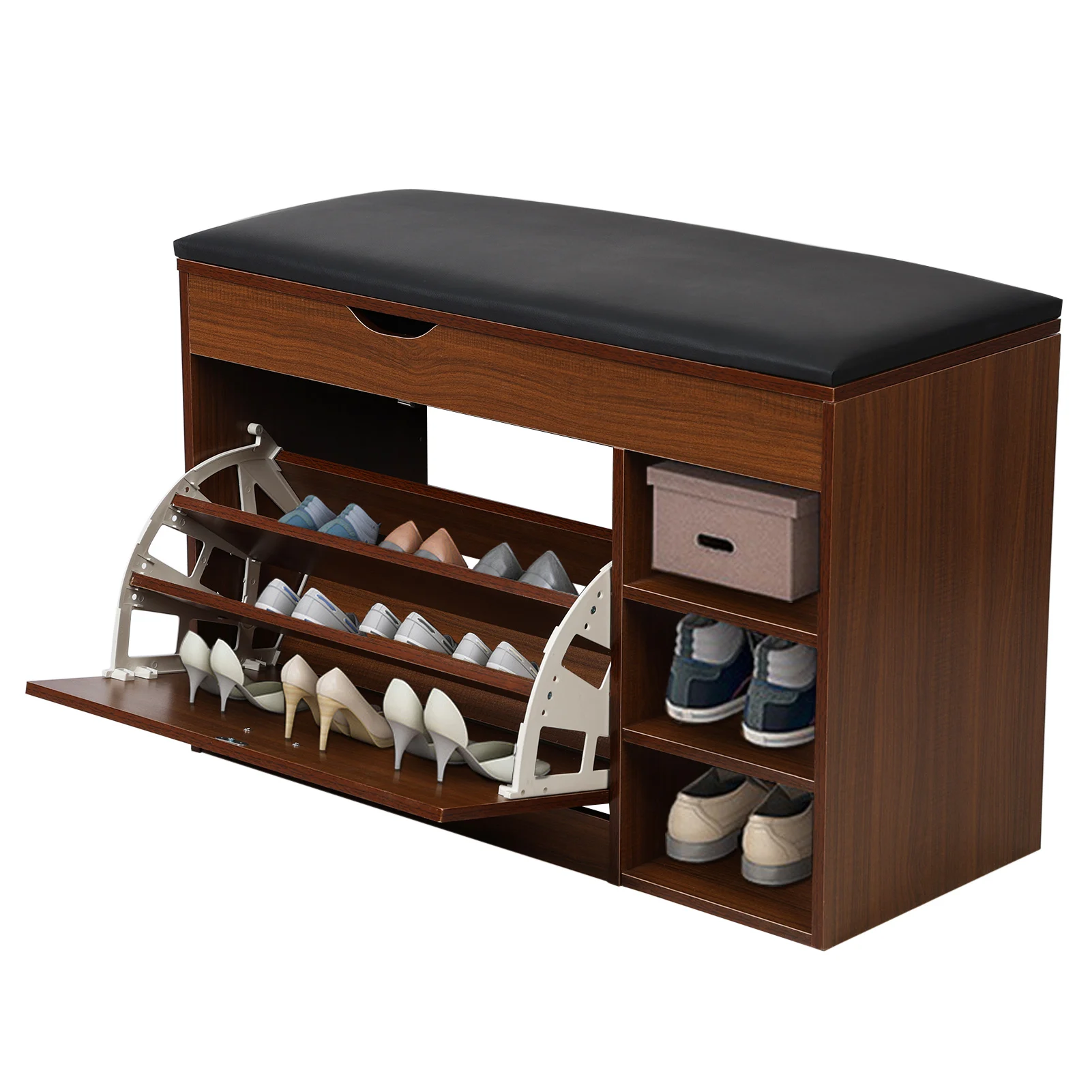
With creative refreshing techniques, many benches can gain several additional years of service. When considering whether to refresh or replace, evaluate the bench’s underlying structure—if the frame remains solid, refreshing is often worth the effort.
Creating a Maintenance Calendar for Long-Term Care
Consistent care is the key to extending your upholstered bench’s lifespan. A maintenance calendar removes guesswork and ensures no aspect of care gets overlooked.
Sample Maintenance Schedule:
Daily Actions:
– Fluff cushions after use
– Remove visible debris
– Address spills immediately
Weekly Tasks:
– Thorough vacuuming with attachments
– Spot cleaning as needed
– Cushion rotation
– Dust exposed wood or metal components
Monthly Procedures:
– Deep crevice vacuuming
– Hardware tightening check
– Deodorizing treatment
– Fabric inspection for issues
Seasonal Projects:
– Deep cleaning appropriate for your fabric type
– Fabric protector reapplication
– Structural inspection
– Refresh or replace accessories
Annual Considerations:
– Professional cleaning assessment
– Structural evaluation
– Photography to document condition and wear patterns
– Evaluation of placement and use patterns
Adjust this schedule based on your bench’s specific usage—entryway benches in busy households might need weekly tasks performed twice weekly, while rarely used decorative benches might require less frequent attention.
A simple paper calendar, digital reminder system, or household management app can track maintenance activities. Some furniture owners keep a log of cleaning products used and their effectiveness for future reference.
Frequently Asked Questions About Upholstered Bench Maintenance
Can I use a carpet cleaner on my upholstered bench?
Most home carpet cleaners use too much water and can saturate the padding beneath upholstery. Unless your bench has a manufacturer’s tag specifically allowing water extraction cleaning, it’s better to spot clean or hire professionals with equipment designed for upholstery.
How do I remove gum from upholstery?
Freeze the gum with ice cubes in a plastic bag. Once hardened, gently scrape off with the edge of a plastic card. For residue, use a solvent-based cleaner appropriate for your fabric type.
Is fabric protector safe for all upholstery types?
No. Always check your fabric type before applying any protector. Some delicate fabrics may be damaged by protectors, while others (like many performance fabrics) already have protection built in. Always test in an inconspicuous area first.
Can I put bench cushion covers in the washing machine?
Only if the care tag specifically indicates machine washing is safe. Even then, use cold water, gentle cycle, and air dry to prevent shrinkage. Many cushion covers are not designed for removal and washing.
How often should professional cleaning be done?
For most household benches, professional cleaning every 12-24 months is sufficient. Increase frequency for high-traffic areas, homes with pets, small children, or individuals with allergies.
What should I do if my bench gets soaked from a spill?
Blot as much liquid as possible immediately. Use fans to increase air circulation and speed drying. If the padding is saturated, consult professionals quickly as mold can develop within 24-48 hours in damp padding.
Are natural cleaners as effective as commercial products?
For routine cleaning, many natural solutions work effectively. For tough stains or deep cleaning, commercial products formulated specifically for your fabric type may provide better results. Always test any cleaner in an inconspicuous area first.
Why Quality Matters: Caring for Premium Upholstered Benches
Premium upholstered benches represent more than just functional furniture—they’re investments in your home’s comfort and style. Understanding the relationship between quality and maintenance helps you maximize your bench’s lifespan and appearance.
High-quality benches from manufacturers like Nested Goods typically feature superior construction elements that facilitate easier maintenance:
- Removable cushions that allow more thorough cleaning
- Stain-resistant fabric treatments
- Higher density foam that retains shape longer
- Double-stitched seams that resist splitting
- Frame construction that minimizes stress on the upholstery
While quality benches initially cost more than budget alternatives, the long-term value becomes evident through longevity. A well-maintained premium bench often lasts 10-15 years, compared to 3-5 years for lower-quality options. This extended lifespan makes regular maintenance not just about aesthetics, but also about protecting your investment.
Beyond practical considerations, well-maintained upholstered benches contribute significantly to your home’s atmosphere. They provide consistent comfort, maintain their visual appeal, and continue to serve as functional design elements year after year. With proper care, these pieces often become cherished elements of your home that gain character while maintaining their beauty.

